AQA A-level Biology - Topic 4. LATEST Q&A. Rated A+
Document Content and Description Below
Define variation - Ans-Differences that exist between individuals In what ways can variation be caused? - Ans-It can be caused by genetic factors, such as alleles from mutations. It can also be ca... used by the environment, such as climate. Most variation is caused by a combination of genetic factors and environmental factors Why is it impossible to study a whole population? - Ans-Because it is too large and would take too long. Instead, scientists use a sample that is representative of the species' population Why should the sample taken be random? - Ans-So you can make sure that the sample isn't biased in any way. What could you calculate to look at variation between species? - Ans-The mean (average) What is standard deviation? - Ans-It tells you how much values in a single sample vary, by measuring the spread of values about the mean What does a large standard deviation mean? - Ans-That the values in the sample vary a lot What does a small standard deviation mean? - Ans-That the values in the sample varies little What can you use standard deviation to draw on a bar chart of mean values? - Ans-An error bar. You would draw it one standard deviation either side of the mean value. How is DNA stored in eukaryotic cells? - Ans-1) The DNA is linear and exists as chromosomes 2)It is stored in the nucleus, and has to be wound up because it is so long 3) It is wound around proteins called histones which help to support the DNA 4)The DNA is coiled very tightly to make a compact chromosome How is DNA stored in prokaryotic cells? - Ans-1)Prokaryotic cells carry DNA as chromosomes, but the DNA is shorter and circular 2)It isn't wrapped around histones, so condenses into the cell by supercoiling What organelles in eukaryotic cells have their own DNA apart from the nucleus? - Ans-The mitochondria and chloroplasts have their own DNA. It is similar to prokaryotic DNA as it is shorter, circular and isn't wrapped around histones. What is a gene? - Ans-A gene is a sequence of DNA bases that codes for a polypeptide or functional RNA What forms the primary structure of proteins? - Ans-The sequence of amino acids. What determines the order of amino acids in a polypeptide? - Ans-The order of the bases How is each amino acid coded for? - Ans-By a sequence of three bases in a gene called a triplet What is functional RNA? - Ans-It is RNA molecules other than mRNA that perform special tasks during protein synthesis. tRNA and rRNA What is a cell's genome? - Ans-The complete set of genes in a cell What is a cell's proteome? - Ans-The full range of proteins that the cell is able to produce If a gene doesn't code for polypeptides, what does it code for? - Ans-Functional RNA such as tRNA and rRNA What are introns? - Ans-Sections of a gene that codes for polypeptides, that doesn't actually code for amino acids [Show More]
Last updated: 1 year ago
Preview 1 out of 25 pages
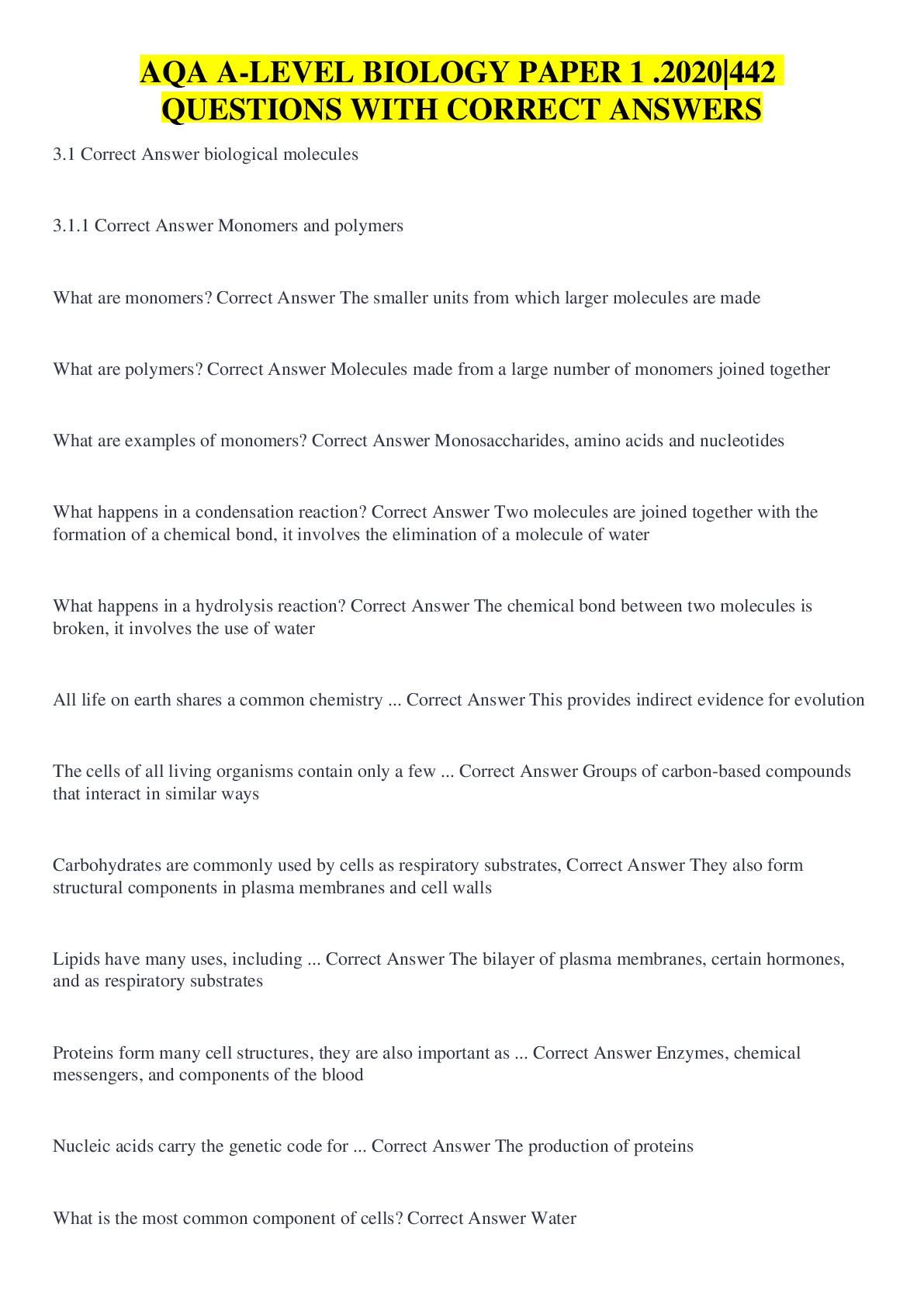
Reviews( 0 )
Document information
Connected school, study & course
About the document
Uploaded On
Jun 15, 2022
Number of pages
25
Written in
Additional information
This document has been written for:
Uploaded
Jun 15, 2022
Downloads
0
Views
40



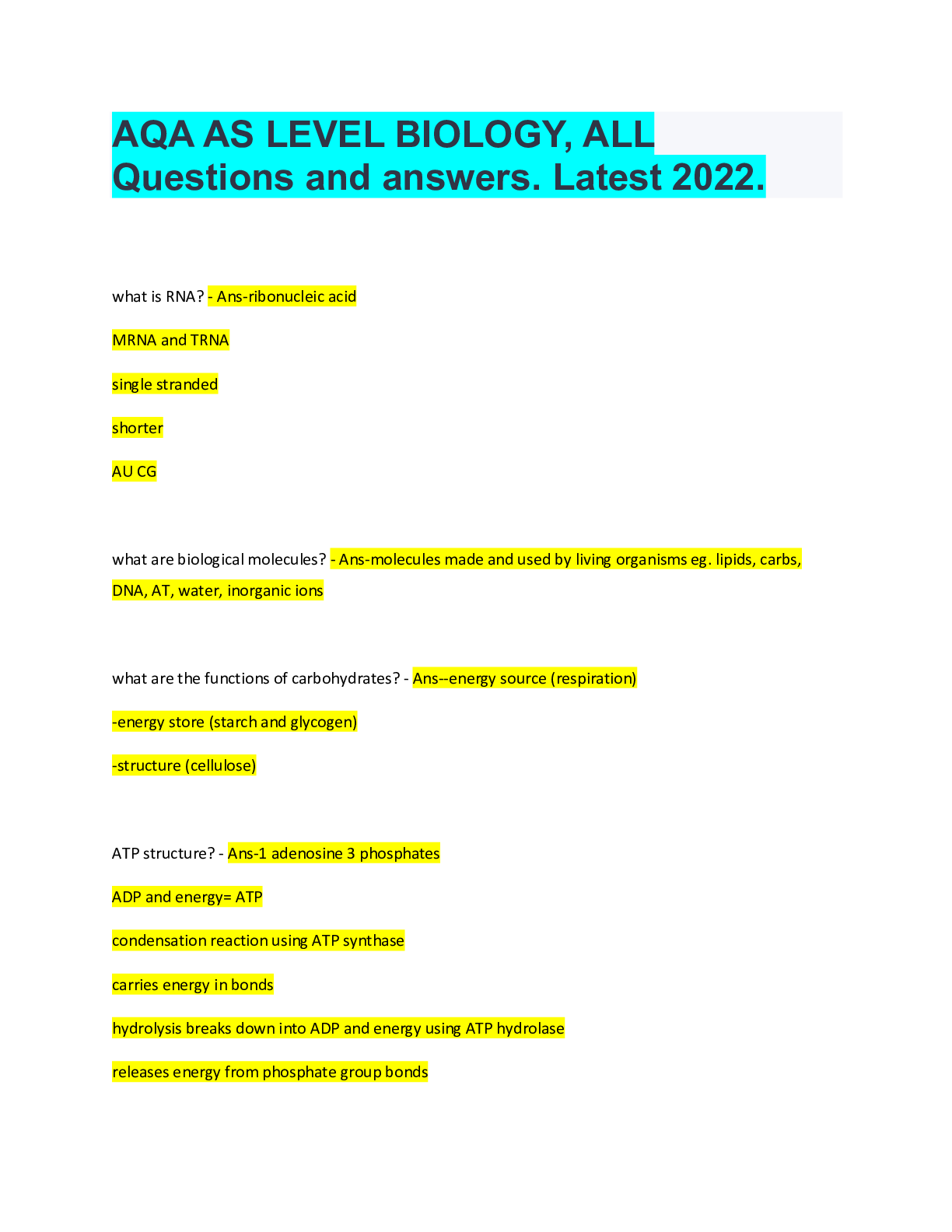

.png)
.png)
.png)



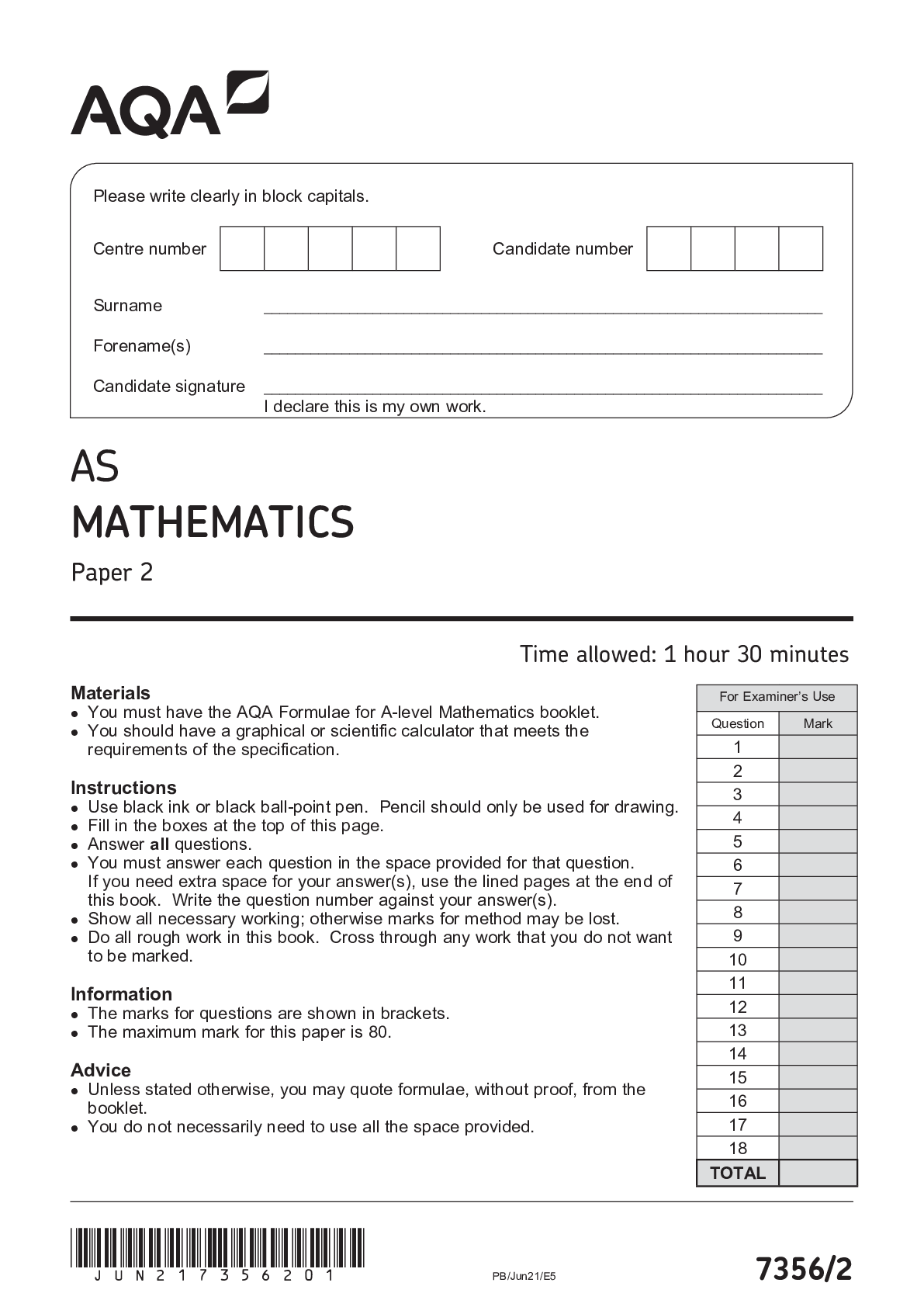

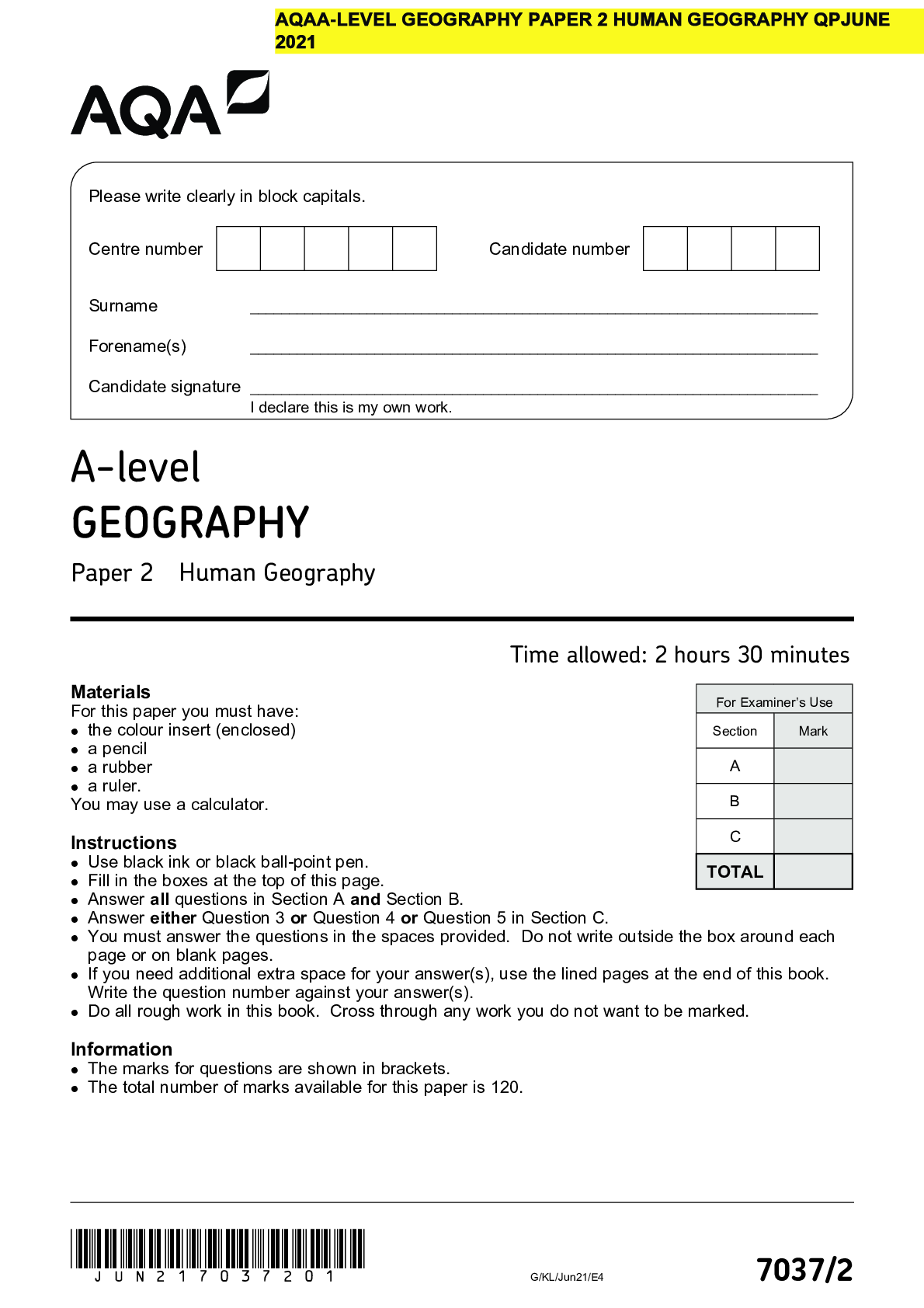



.png)


.png)
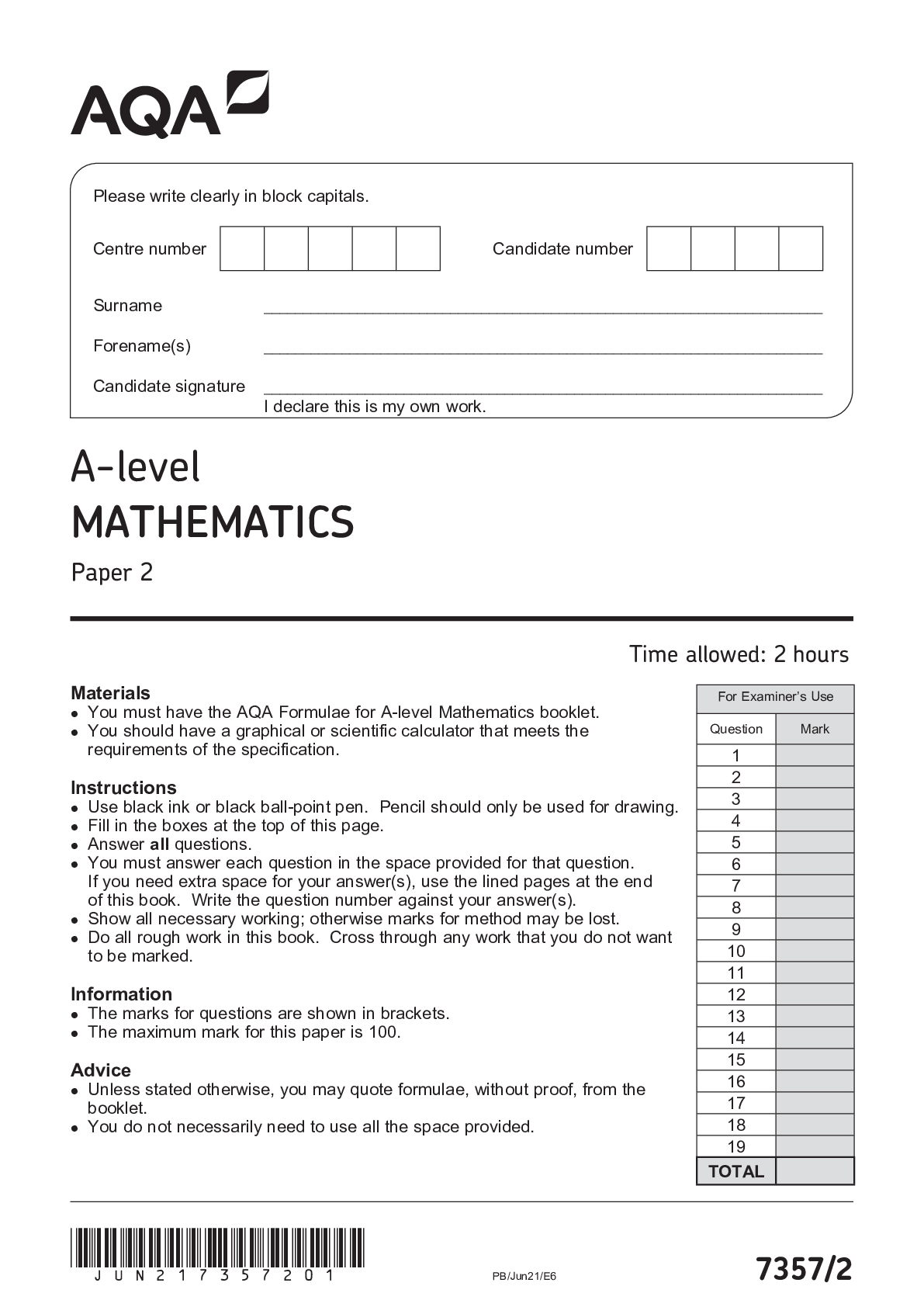

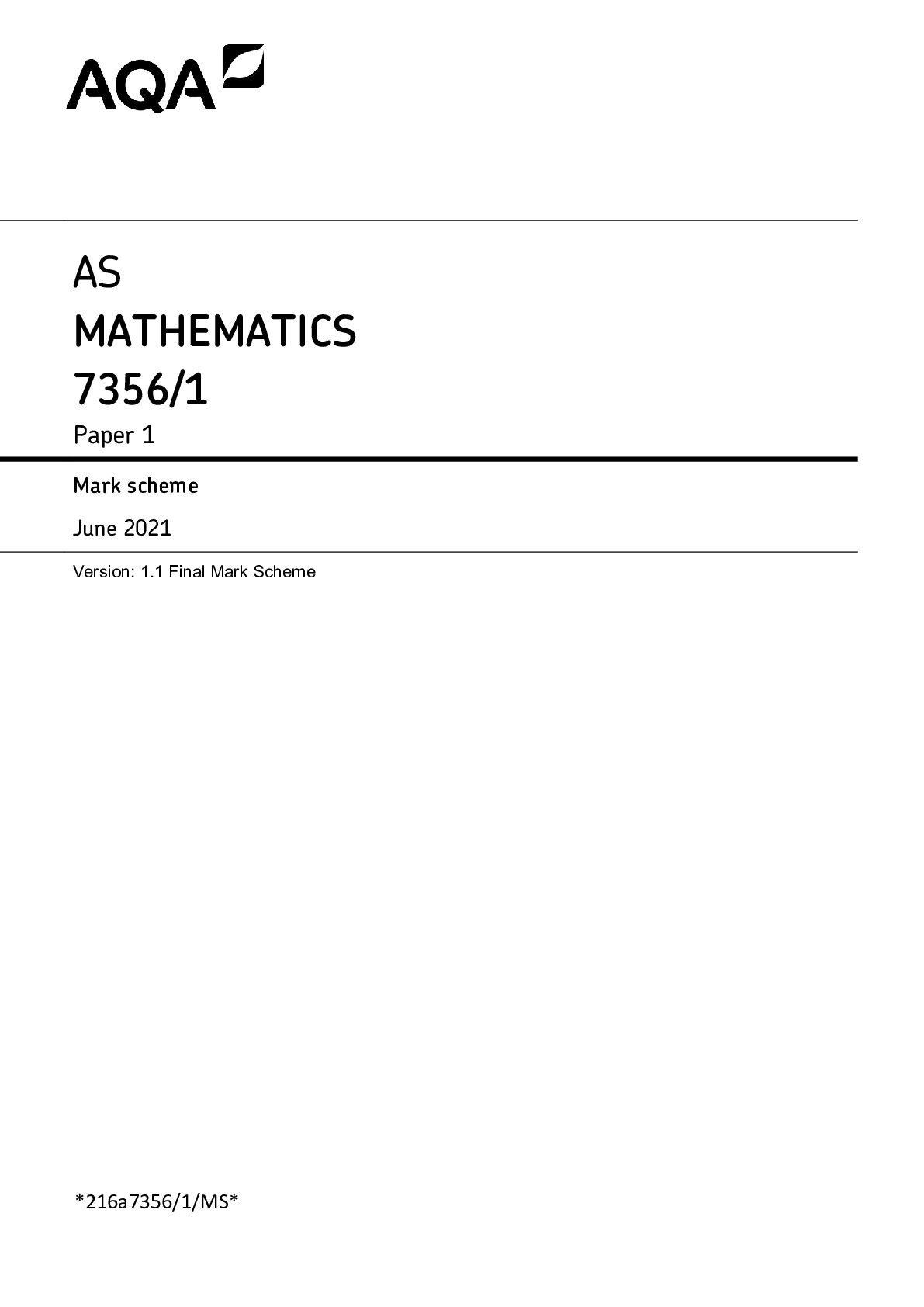
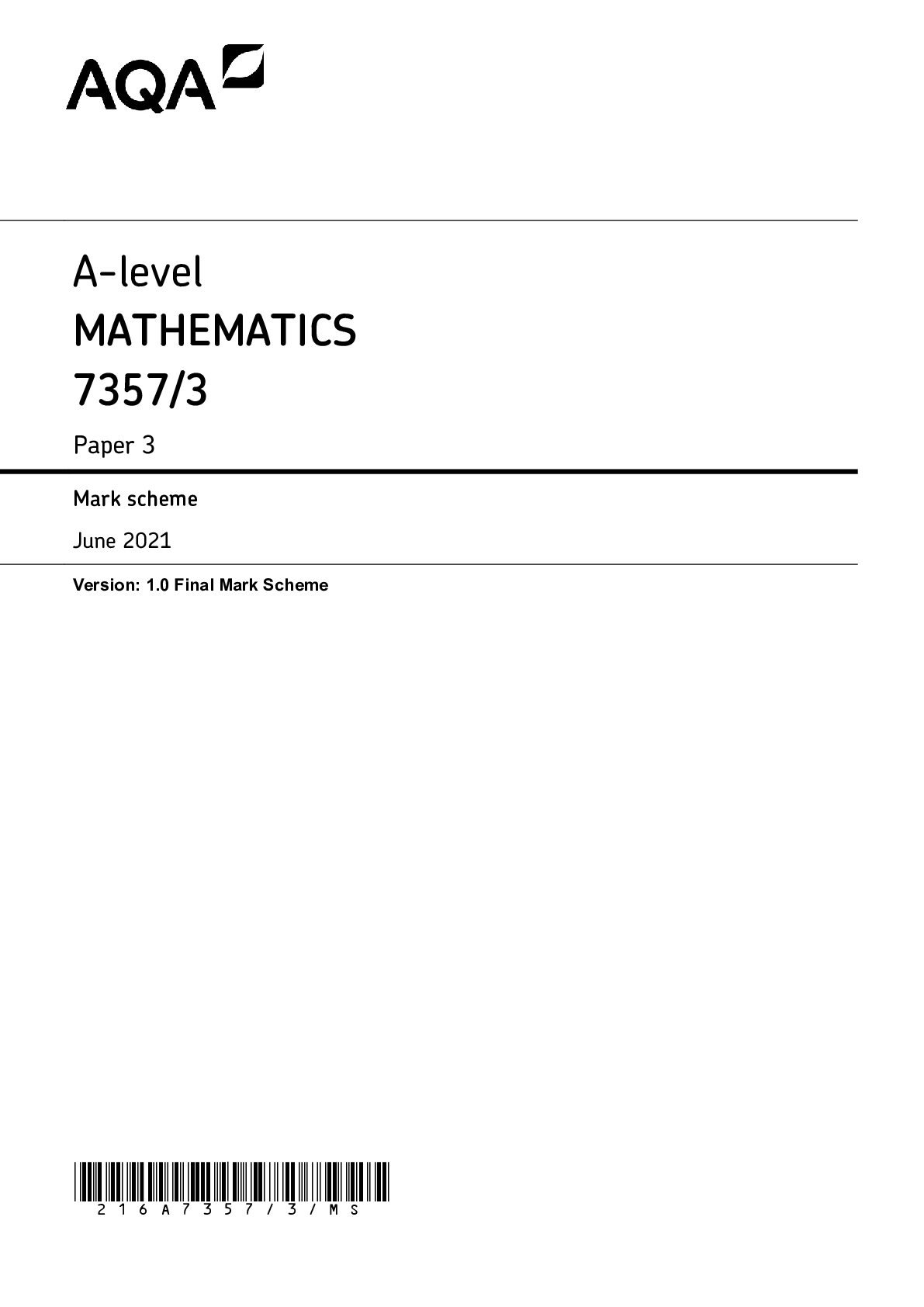
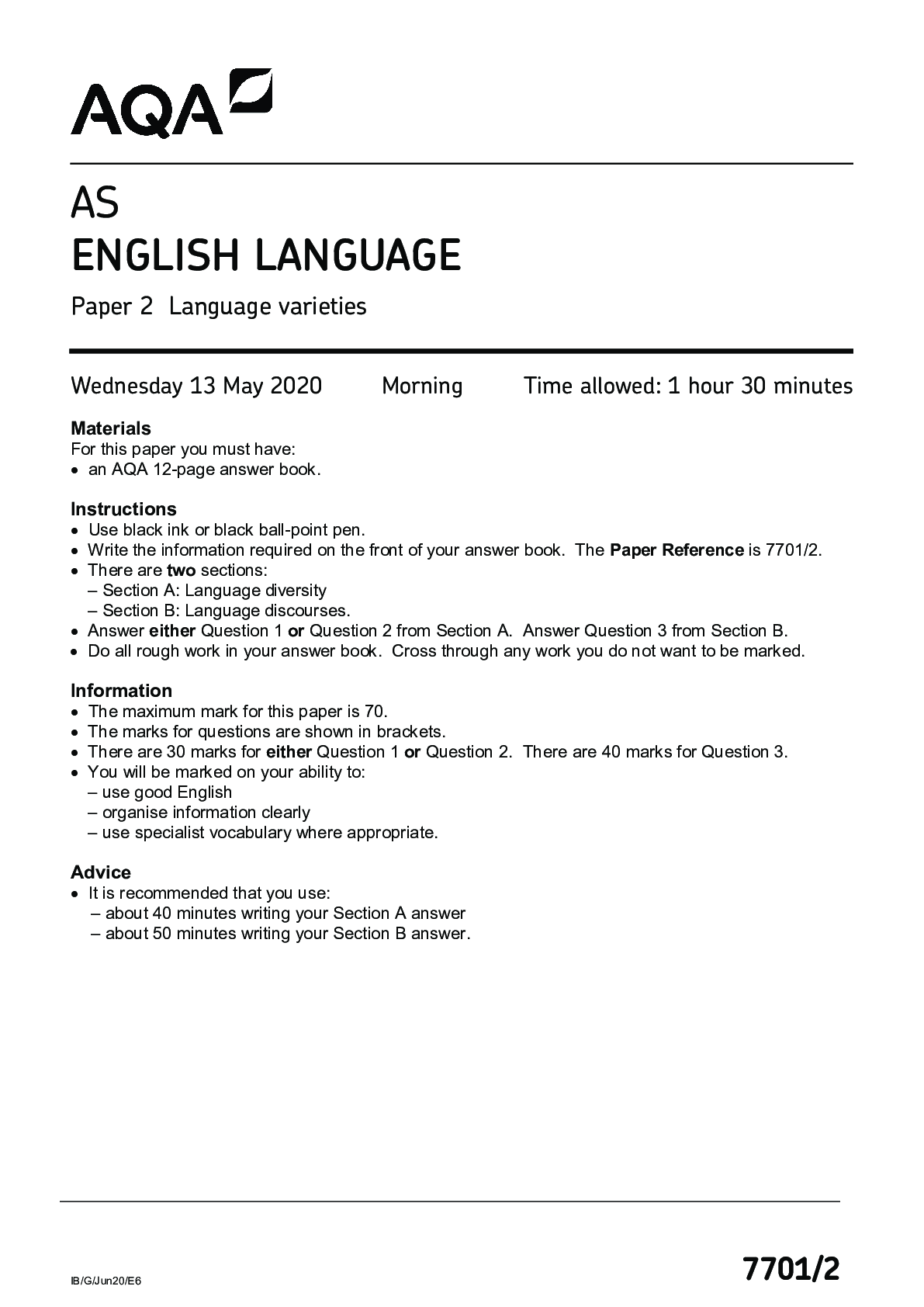
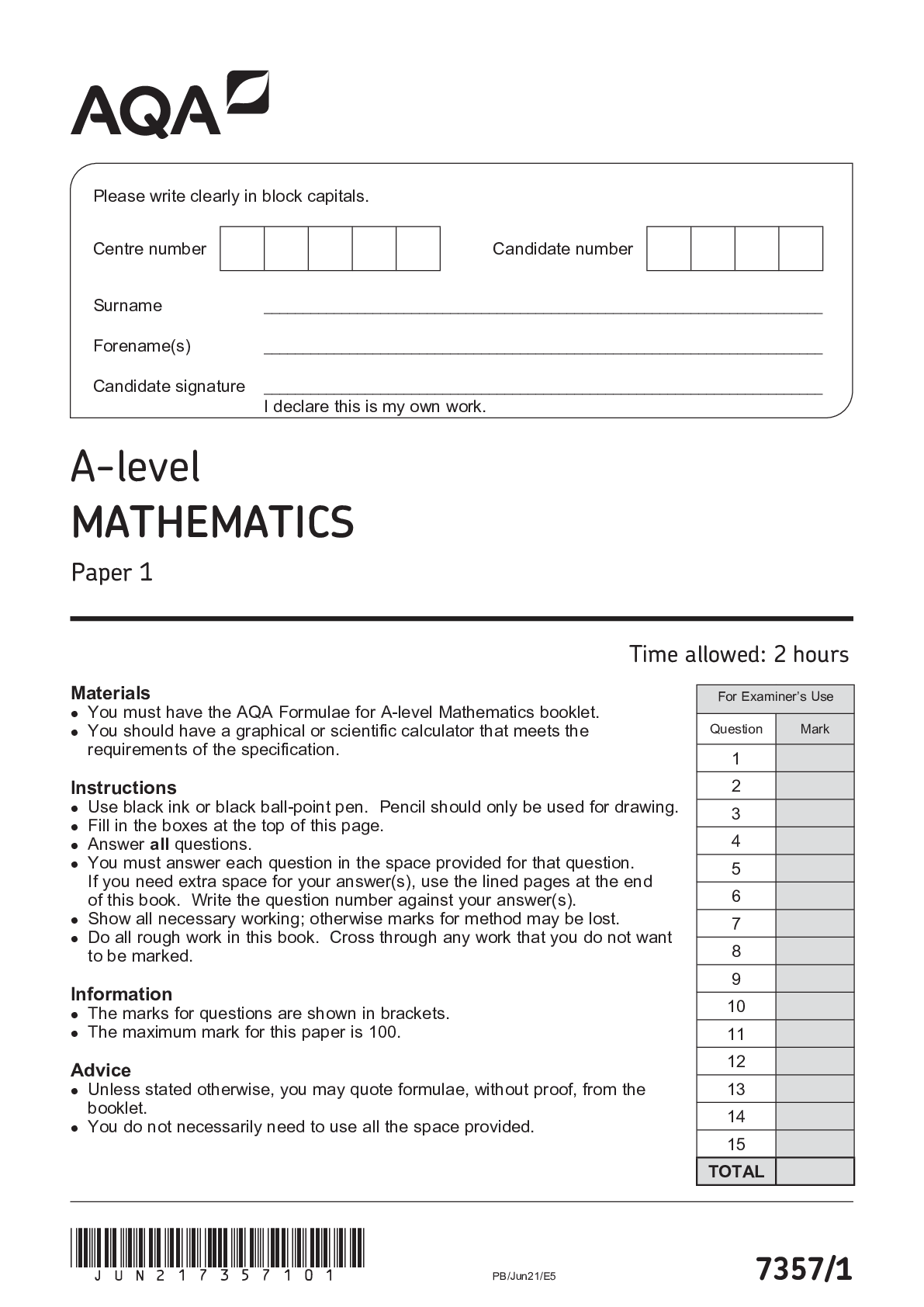
.png)

